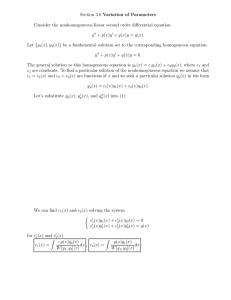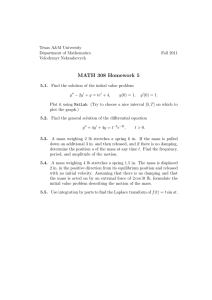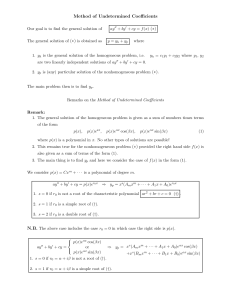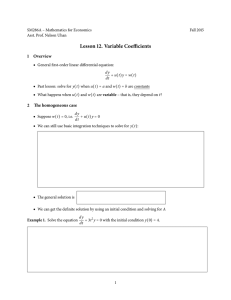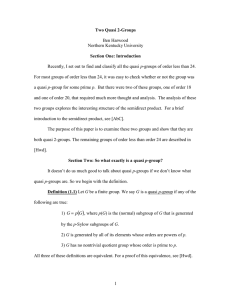Math 215 Spring 2010 Assignment 4
advertisement
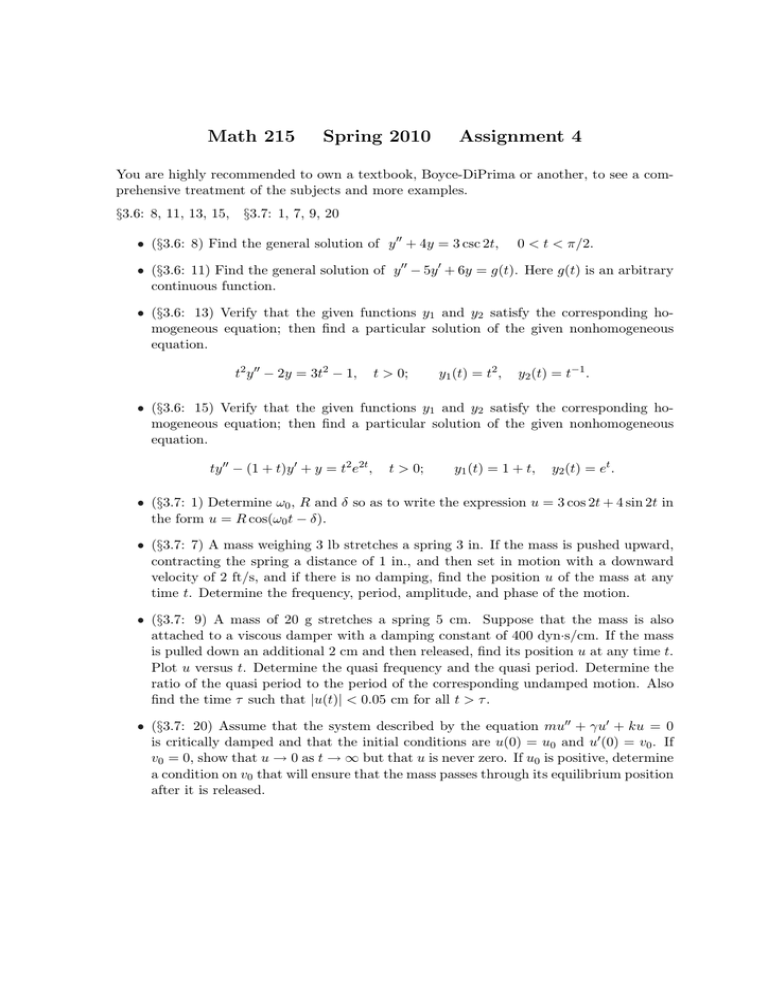
Math 215 Spring 2010 Assignment 4 You are highly recommended to own a textbook, Boyce-DiPrima or another, to see a comprehensive treatment of the subjects and more examples. §3.6: 8, 11, 13, 15, §3.7: 1, 7, 9, 20 • (§3.6: 8) Find the general solution of y 00 + 4y = 3 csc 2t, 0 < t < π/2. • (§3.6: 11) Find the general solution of y 00 − 5y 0 + 6y = g(t). Here g(t) is an arbitrary continuous function. • (§3.6: 13) Verify that the given functions y1 and y2 satisfy the corresponding homogeneous equation; then find a particular solution of the given nonhomogeneous equation. t2 y 00 − 2y = 3t2 − 1, t > 0; y1 (t) = t2 , y2 (t) = t−1 . • (§3.6: 15) Verify that the given functions y1 and y2 satisfy the corresponding homogeneous equation; then find a particular solution of the given nonhomogeneous equation. ty 00 − (1 + t)y 0 + y = t2 e2t , t > 0; y1 (t) = 1 + t, y2 (t) = et . • (§3.7: 1) Determine ω0 , R and δ so as to write the expression u = 3 cos 2t + 4 sin 2t in the form u = R cos(ω0 t − δ). • (§3.7: 7) A mass weighing 3 lb stretches a spring 3 in. If the mass is pushed upward, contracting the spring a distance of 1 in., and then set in motion with a downward velocity of 2 ft/s, and if there is no damping, find the position u of the mass at any time t. Determine the frequency, period, amplitude, and phase of the motion. • (§3.7: 9) A mass of 20 g stretches a spring 5 cm. Suppose that the mass is also attached to a viscous damper with a damping constant of 400 dyn·s/cm. If the mass is pulled down an additional 2 cm and then released, find its position u at any time t. Plot u versus t. Determine the quasi frequency and the quasi period. Determine the ratio of the quasi period to the period of the corresponding undamped motion. Also find the time τ such that |u(t)| < 0.05 cm for all t > τ . • (§3.7: 20) Assume that the system described by the equation mu00 + γu0 + ku = 0 is critically damped and that the initial conditions are u(0) = u0 and u0 (0) = v0 . If v0 = 0, show that u → 0 as t → ∞ but that u is never zero. If u0 is positive, determine a condition on v0 that will ensure that the mass passes through its equilibrium position after it is released.
